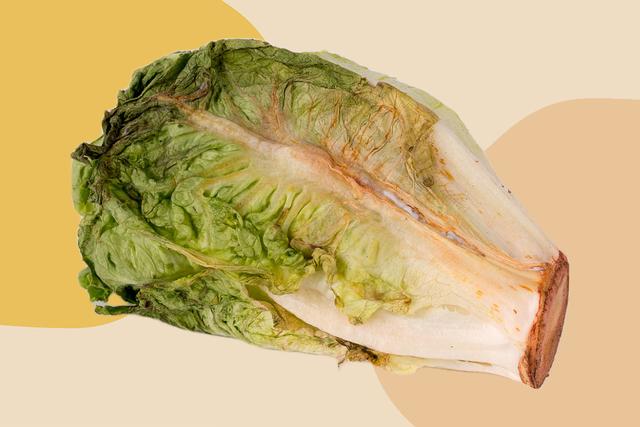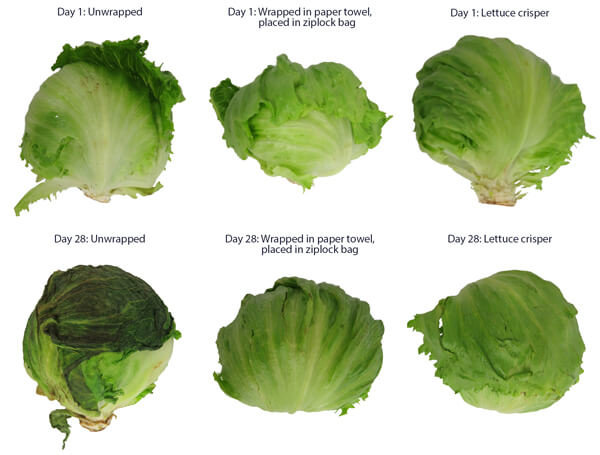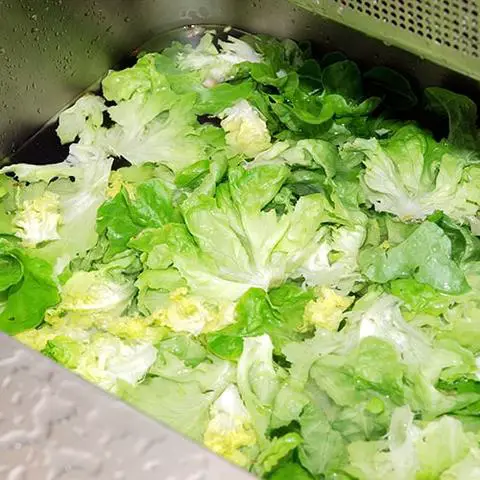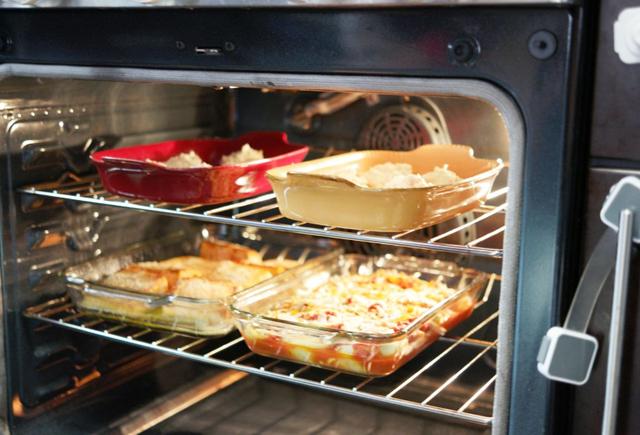
Wondering how long lettuce can be left out without spoiling? Discover the optimal time frame for leaving lettuce at room temperature and ensure your salads stay fresh and safe to eat. Get valuable insights on proper storage practices to maintain the quality of your favorite leafy green vegetable.
How Long Does Lettuce Last Unrefrigerated?

Lettuce lasts unrefrigerated for up to 2 hours. While refrigeration helps prolong the freshness of perishable goods, leaving lettuce out on the countertop for too long can cause it to spoil and become unsafe to consume. Bacteria grows rapidly on fresh produce, and warmer temperatures provide an ideal environment for bacterial growth. It is important to store perishable items like lettuce below 40 degrees Fahrenheit to prevent bacterial contamination.
If lettuce is left unrefrigerated for more than a couple of hours, it will start to wilt and spoil. Consuming spoiled lettuce can lead to food poisoning, with symptoms such as diarrhea, nausea, vomiting, and gastrointestinal pain. It is best to discard any lettuce that has been left out for longer than 2 hours, as it is safer to assume that bacteria may have contaminated it.
To ensure safety in case lettuce has been left out for up to two hours, one can use a vinegar solution to clean the leaves. Mixing 1 part vinegar with 3 parts water and submerging the lettuce in this mixture helps remove bacteria that may be present from handling. However, if the lettuce has been left out for longer than two hours or shows signs of spoilage, it is recommended to throw it away and replace it.
What temperature is safe for lettuce?
The safe temperature for storing lettuce is below 40 degrees Fahrenheit. This temperature range prevents bacterial growth and helps to maintain the freshness and quality of the lettuce. It is important to refrigerate lettuce as soon as possible to keep it at a safe temperature and prevent the growth of harmful bacteria.
What happens if I eat bad lettuce?

If you happen to consume spoiled lettuce, you may become sick. Ingesting bacteria invites unwanted organisms into your body. As a result, your body will fight them off like any other infection. Just as you would experience with a flu, you could experience various unpleasant symptoms. Diarrhea, nausea, vomiting, and gastrointestinal pain result from various bacteria that grow on spoiled lettuce.
Depending on the type of infection that results, your symptoms may be mild to severe. It is best to consult with a doctor in the event you experience food poisoning. Monitor the progress of your illness and prepare to visit the hospital if things turn for the worse.
Usually, if lettuce goes bad, you want to throw it in the garbage. It’s safer to assume the greens will make you sick than to chance it. However, to make extra certain your lettuce is safe to eat when it has sat out for up to two hours, you may use a vinegar solution. Mix 1 part vinegar to 3 parts water, submerge the lettuce in the mixture, wash, then rinse with cold water.
Can I clean bad lettuce?

While it may be tempting to try and salvage bad lettuce by cleaning it, the truth is that once lettuce has gone bad, cleaning it will not make it safe to eat. If your lettuce has been sitting out for more than 2 hours and has started to wilt or spoil, it is best to throw it away. Cleaning the lettuce with a vinegar solution or washing it with water will not remove bacteria or pathogens that have already grown on the lettuce. It is better to err on the side of caution and avoid consuming potentially contaminated food.
The cost of replacing a head of lettuce or bagged greens is minimal compared to the potential health risks associated with eating spoiled lettuce. Bacteria such as E. coli or salmonella can cause food poisoning and lead to symptoms like diarrhea, nausea, vomiting, and gastrointestinal pain. If you suspect that you have consumed spoiled lettuce and are experiencing severe symptoms, it is important to seek medical attention.
How long do different types of lettuce last unrefrigerated?

Lettuce should not be left unrefrigerated for longer than 2 hours. After this time, the lettuce will begin to wilt and spoil, as bacteria grows rapidly on fresh produce. It is important to store perishable items below 40 degrees Fahrenheit to prevent bacterial growth. If lettuce is consumed after it has spoiled, it can lead to food poisoning symptoms such as diarrhea, nausea, vomiting, and gastrointestinal pain.
To ensure the safety of lettuce that has been left out for up to two hours, a vinegar solution can be used to clean away any bacteria present on the leaves. However, it is always best to throw out lettuce that has been left out for too long rather than risk getting sick. Other leafy greens, such as kale, raw spinach, and cabbage, also only last 2 hours at room temperature before they need to be refrigerated.
The bottom line: Lettuce lasts unrefrigerated for up to 2 hours.
Lettuce, like other leafy greens, keeps better in colder temperatures. However, if you leave lettuce out for longer than 2 hours, it will begin to wilt and spoil. Bacteria grows rapidly on fresh produce, and warmer temperatures allow for bacterial growth. Storing perishable items below 40 degrees Fahrenheit is necessary to prevent bacteria from growing on your food item.
If you consume spoiled lettuce, you may become sick as bacteria can enter your body. Symptoms of food poisoning include diarrhea, nausea, vomiting, and gastrointestinal pain. It is important to consult with a doctor if you experience these symptoms and monitor the progress of your illness. To ensure the safety of lettuce that has been left out for up to two hours, you may use a vinegar solution to clean away any bacteria present on the leaves.
While heads of lettuce last longer unrefrigerated than broken up lettuce, there is still a chance that it may go bad after two hours. It is better to throw out warm lettuce rather than risk getting sick. Additionally, other leafy greens such as kale, raw spinach, and cabbage also need to be refrigerated within 2 hours of purchase to prevent bacterial growth. Basil is an exception as it stores better at room temperature and can last up to 7-10 days unrefrigerated while retaining its flavor.
Related Questions

1. Can I still eat lettuce that has been left out for more than 2 hours?
If lettuce has been left out for more than 2 hours, it is best to throw it out. The risk of bacterial growth and food poisoning increases significantly after this time period.
2. How can I prevent lettuce from spoiling quickly?
To prevent lettuce from spoiling quickly, it is important to store it properly in the refrigerator as soon as possible. Make sure to wash and dry the lettuce thoroughly before storing it in an airtight container or bag with a paper towel to absorb excess moisture.
3. How long does bagged lettuce last in the refrigerator?
Bagged lettuce typically lasts for about 3-5 days in the refrigerator when stored properly. However, it is always a good idea to check for any signs of spoilage before consuming.
Can lettuce be left out overnight?
Lettuce should not be left out overnight. It is best to store lettuce in the refrigerator as soon as possible after purchase or use. Leaving lettuce out at room temperature for an extended period of time allows for bacterial growth, increasing the risk of foodborne illnesses. Bacteria thrives between temperatures of 40 and 140 degrees Fahrenheit, making it unsafe to leave lettuce out overnight.
If lettuce is left out overnight, it will likely wilt and spoil. This can make it unsafe to consume as bacteria such as E. Coli or salmonella may have developed on the leaves. Consuming spoiled lettuce can lead to unpleasant symptoms such as diarrhea, nausea, vomiting, and gastrointestinal pain. It is important to prioritize food safety and discard any lettuce that has been left out overnight.
How long does kale last unrefrigerated?
Kale, like other leafy greens, should not be left unrefrigerated for longer than 2 hours. After this time, kale begins to wilt and spoil, making it unsafe to consume. Bacteria grows rapidly on fresh produce, and warmer temperatures provide an ideal environment for bacterial growth. To ensure food safety, perishable items such as kale should be stored below 40 degrees Fahrenheit. If kale is left out at room temperature for too long, bacteria can multiply and pose a risk to your health.
It is important to note that although kale may last slightly longer unrefrigerated compared to lettuce or other greens, it still has a limited shelf life outside of the refrigerator. To maintain the freshness and quality of kale, it is best to store it in the refrigerator as soon as possible after purchase or harvest. By doing so, you can maximize its shelf life and minimize the risk of bacterial contamination.
If you happen to forget to refrigerate your kale and it has been sitting out for more than 2 hours, it is advisable to discard it rather than taking the risk of consuming spoiled greens. While washing the leaves with a vinegar solution may help remove some bacteria from handling, it cannot reverse spoilage or eliminate all potential pathogens. It’s always better to prioritize food safety and replace any leafy greens that have been left at room temperature for an extended period of time.
How long does basil last unrefrigerated?
Basil lasts 7 to 10 days unrefrigerated, making it an exception among highly perishable leafy greens. Unlike lettuce and other greens, basil actually stores better at room temperature. When refrigerated, basil wilts and can quickly spoil, turning dark in color.
In conclusion, lettuce should not be left out at room temperature for more than two hours to prevent bacterial contamination. Proper storage in the refrigerator is crucial to maintain its freshness and reduce the risk of foodborne illnesses.
Learn More About Grilling
If you want to learn more about grilling, check out these other helpful resources!











